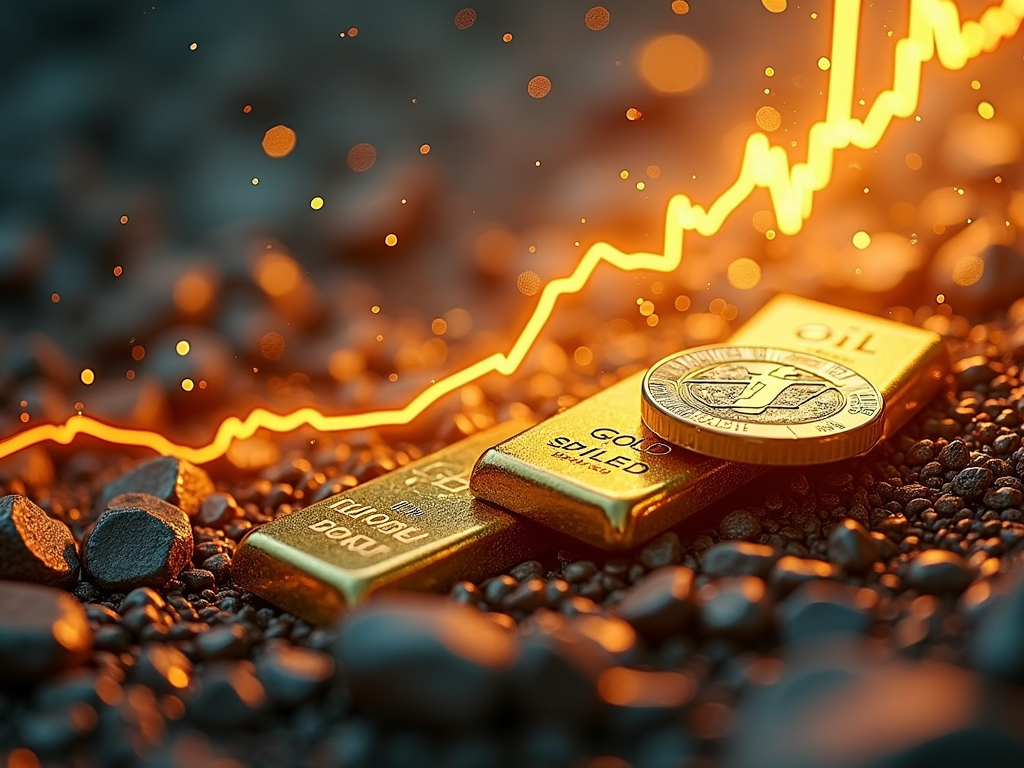With the increase in inflation, the world of commodities is under the spotlight of investors. Commodity stocks and industrial metals are considered attractive options to benefit from inflationary expectations. While commodity stocks are often seen as a direct bet on rising prices, industrial metals offer a more stable yet equally profitable alternative. This article explores the differences and potential of both investment options and provides valuable insights for investors.
Commodity Stocks: Riding the Speculative Wave of the Markets

Commodity stocks have stood out as attractive investment options during times of inflationary expectations. Their ability to generate appreciation is based on a combination of market trends and global economic forecasts, often influenced by geopolitical uncertainties. In this dynamic context, investors adeptly navigate the speculative wave, trying to gauge the market and make informed decisions.
To successfully ride the speculative wave of commodity stocks, investors need to develop a profound understanding of current market trends. A clear example can be seen with SFC Energy stocks, which are currently at the center of significant speculative activity. These stocks benefit from stable forecasts for 2025, providing a sense of security despite existing uncertainties in the market. Such stability factors can serve as warning signals for prudent investors ready to ride the wave alongside.
Another essential factor influencing the commodity stock market is economic forecasts. Recently, ANZ Bank raised its forecast for Chinese GDP growth from 4.3% to 4.8%, suggesting a potential increase in demand for commodities. This increased demand can support rising prices, making commodity stocks more profitable. Political and military developments also contribute to a volatile environment; they can fuel uncertainties that represent both risks and opportunities for bold investors.
Successful strategies to capitalize on the speculative wave include constant market monitoring to react quickly to changes. A diversified investment strategy, including various commodity stocks, can help manage risks and take advantage of different market movements. The short-term fluctuations characteristic of commodity stocks require patience and a long-term perspective to maximize potential returns.
Finally, effective risk management plays a crucial role. This can be achieved using tools like stop-loss orders, which help minimize losses. Overall, commodity stocks offer opportunities to maximize profits during inflationary phases, but their successful use requires a combination of market knowledge, strategy, and risk tolerance.
Industrial Metals: Pillars of Inflationary Stability

Industrial metals are real powerhouses in the commodity world and contribute significantly to economic stability, especially in times of increasing inflationary expectations. These metals are versatile and find applications in numerous sectors. Their importance increases especially when investments are needed to hedge against inflation.
Among the prominent representatives of this group of metals is silver. In addition to its role as an electrical conductor in the electronics industry, silver stands out for its antiseptic properties, making it indispensable in medicine. It is often used in alloys that stand out for their mechanical stability. The solar industry also uses high-purity silver for the production of solar cells, thus increasing demand during the ecological transition.
Copper, a metal of universal importance, is primarily used in the electrical sector. The demand for copper is strongly correlated with economic activity, as it is used in construction and energy supply. In this way, copper significantly contributes to electrified infrastructure, which is at the forefront during periods of increased state investment programs.
Nickel and zinc are also of fundamental importance, especially for their corrosion resistance. Nickel, frequently used in the steel industry and the construction of chemical plants, also plays a key role in modern battery technology. Zinc, on the other hand, serves as a protective coating and is used, among other things, in galvanizing.
Lithium and cobalt are indispensable components in the production of lithium-ion batteries, essential for the boom in electric mobility. Lithium, with its high energy density, and cobalt, which ensures thermal stability, stimulate demand during times of technological advancement.
Finally, manganese and graphite play significant roles in battery development and steel production. Manganese increases the strength of steel alloys, while graphite is essential as an anode material in batteries.
These industrial metals are stable and versatile – factors that make them indispensable despite rising inflation. Their adaptability to technological changes and economic needs underscores their ongoing relevance as an investment in uncertain times.